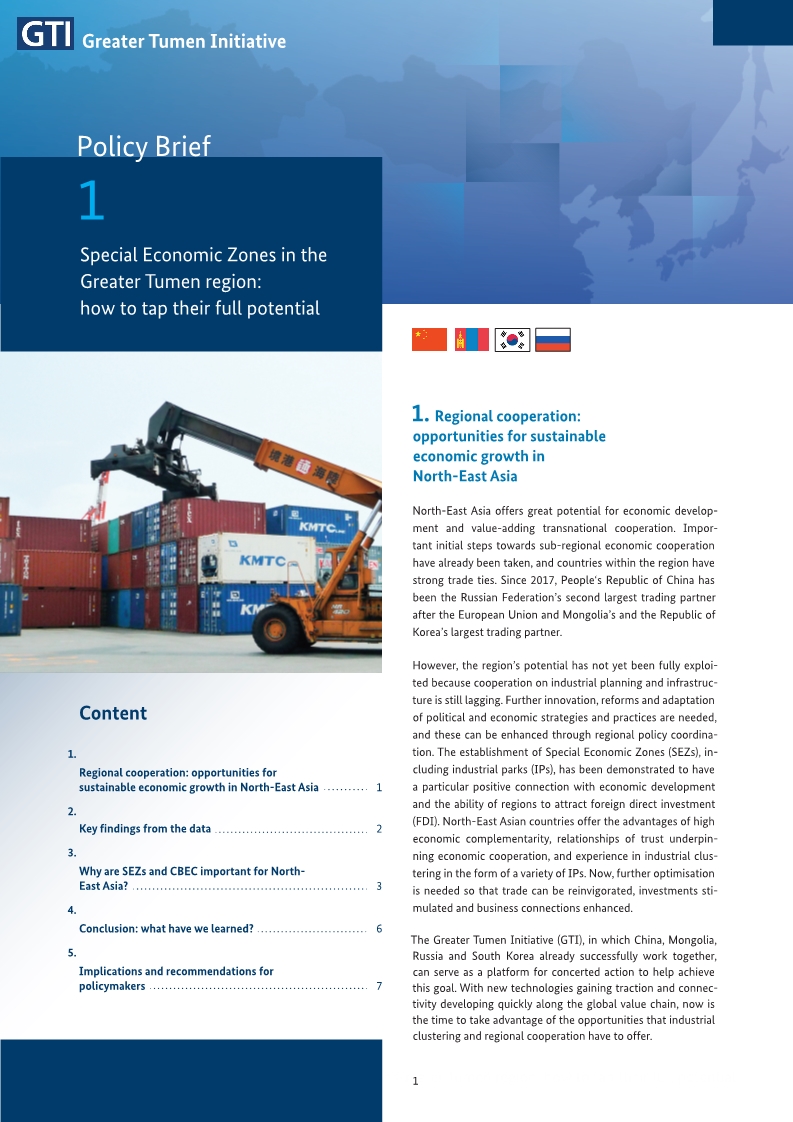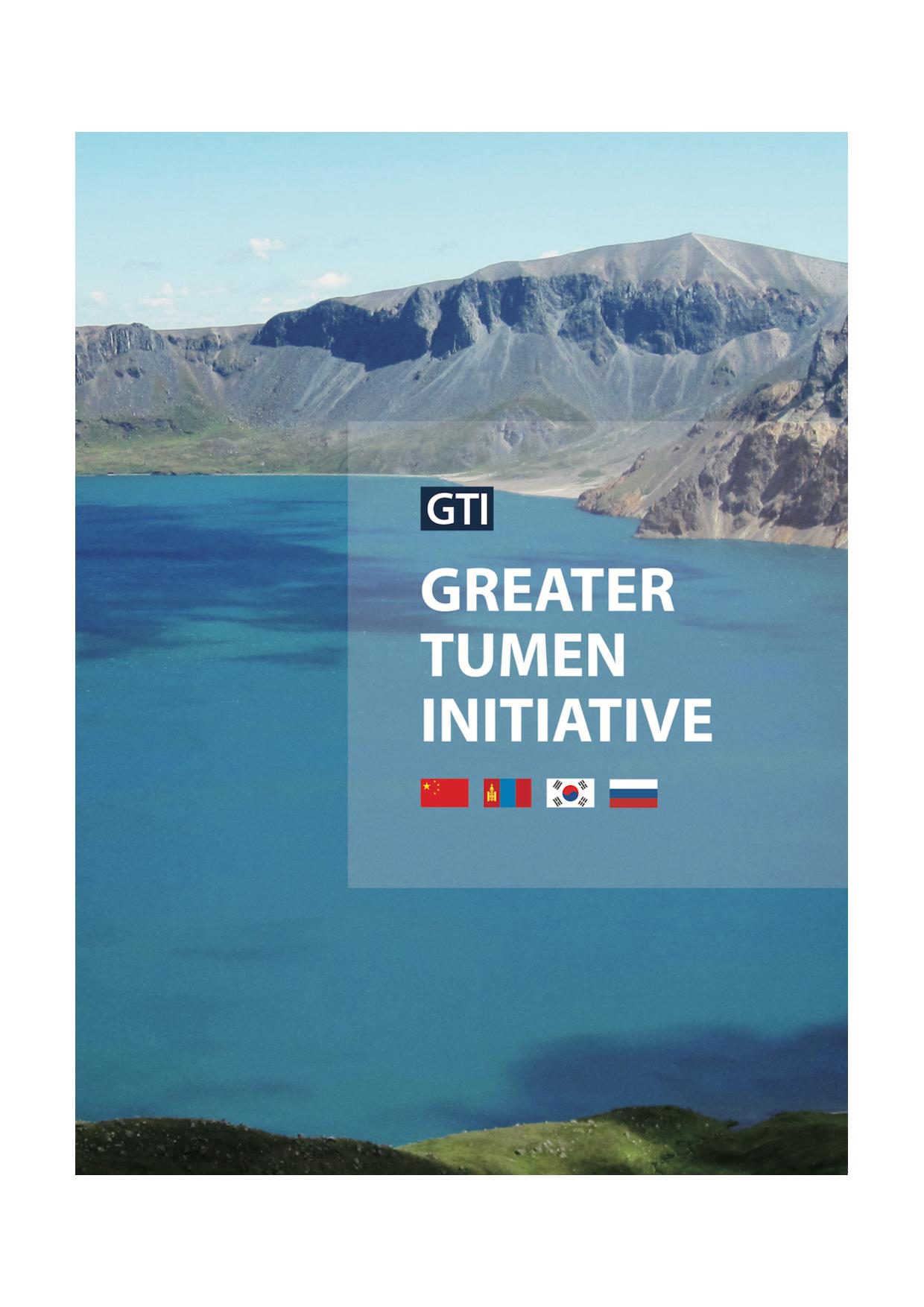-
 4 January, 2019 GTI Policy Brief 1 : Special Economic Zones in the Greater Tumen Region
4 January, 2019 GTI Policy Brief 1 : Special Economic Zones in the Greater Tumen RegionGTI Policy Brief
-

-
/regional report cover.jpg) 13 July, 2018 Regional Report of Agricultural Coopreration in Greater Tumen Region
13 July, 2018 Regional Report of Agricultural Coopreration in Greater Tumen RegionThis report discusses trades of agricultural and foodproducts, cross-border cooperation in agricultural sectors, and approaches for GTI agricultural cooperation.Through providing guidance for projects for agricultural cooperation, this report is intended to help securing major food supplies and further growths in related industries in the region as well as the participating countries.
-
/AEO.jpg) 21 April, 2018 Report on Authorized Economic Operator (AEO) Cooperation Scheme among Customs Administrations in support of Greater Tumen Initiative (GTI) Member States
21 April, 2018 Report on Authorized Economic Operator (AEO) Cooperation Scheme among Customs Administrations in support of Greater Tumen Initiative (GTI) Member StatesThe Authorized Economic Operator (AEO) program has received much attention as the global trade and the security threats grow. As of April 2017, there are 73 AEO programs in operation and 17 more programs to be launched in the near future. This report provides information on the AEO programs of the GTI Member States and drafts a Standardized Mutual Recognition Arrangement Text. This project was suggested by the General Administration of Customs of China at the 5th GTI Trade Facilitation Committee (TFC), adopted by TFC members in 2015, and endorsed by the GTI Consultative Commission in 2016.

